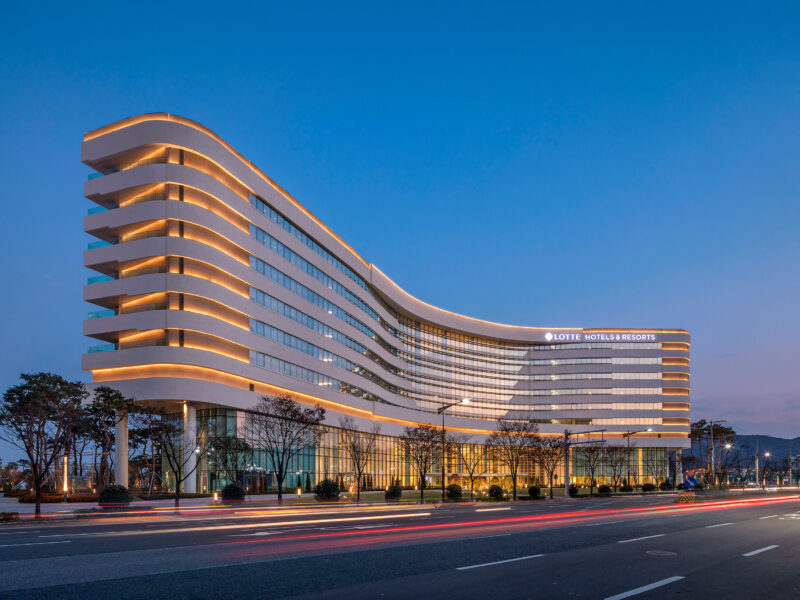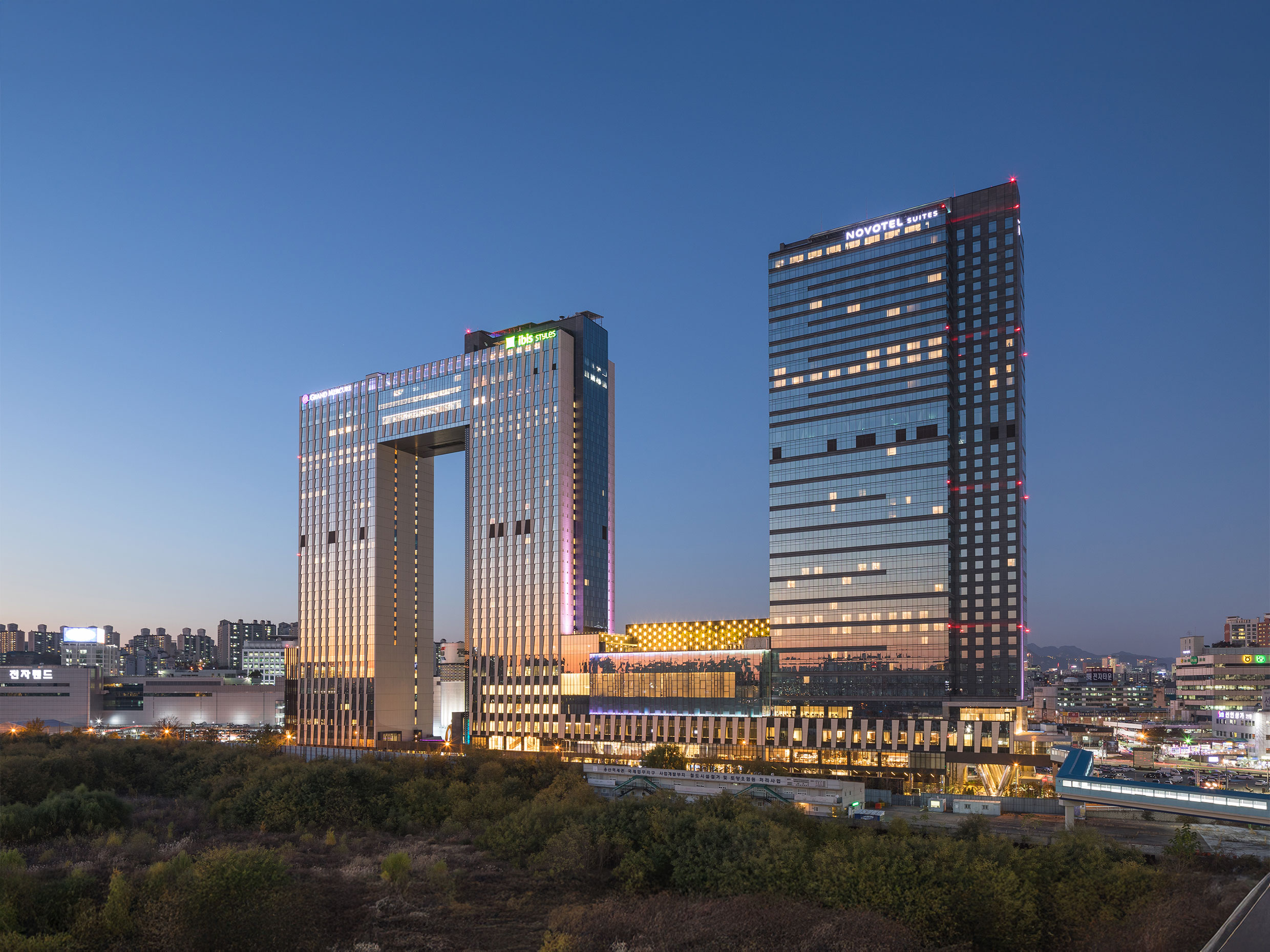

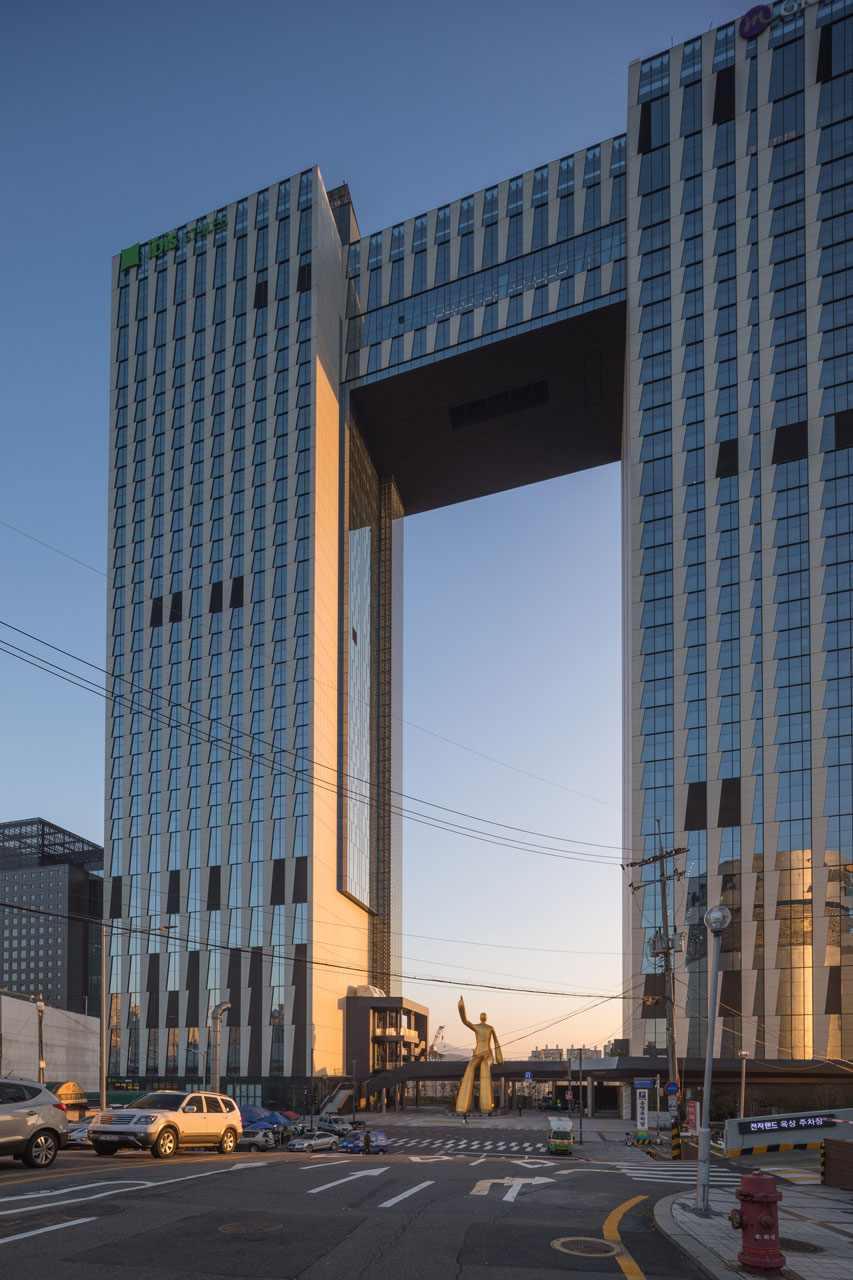
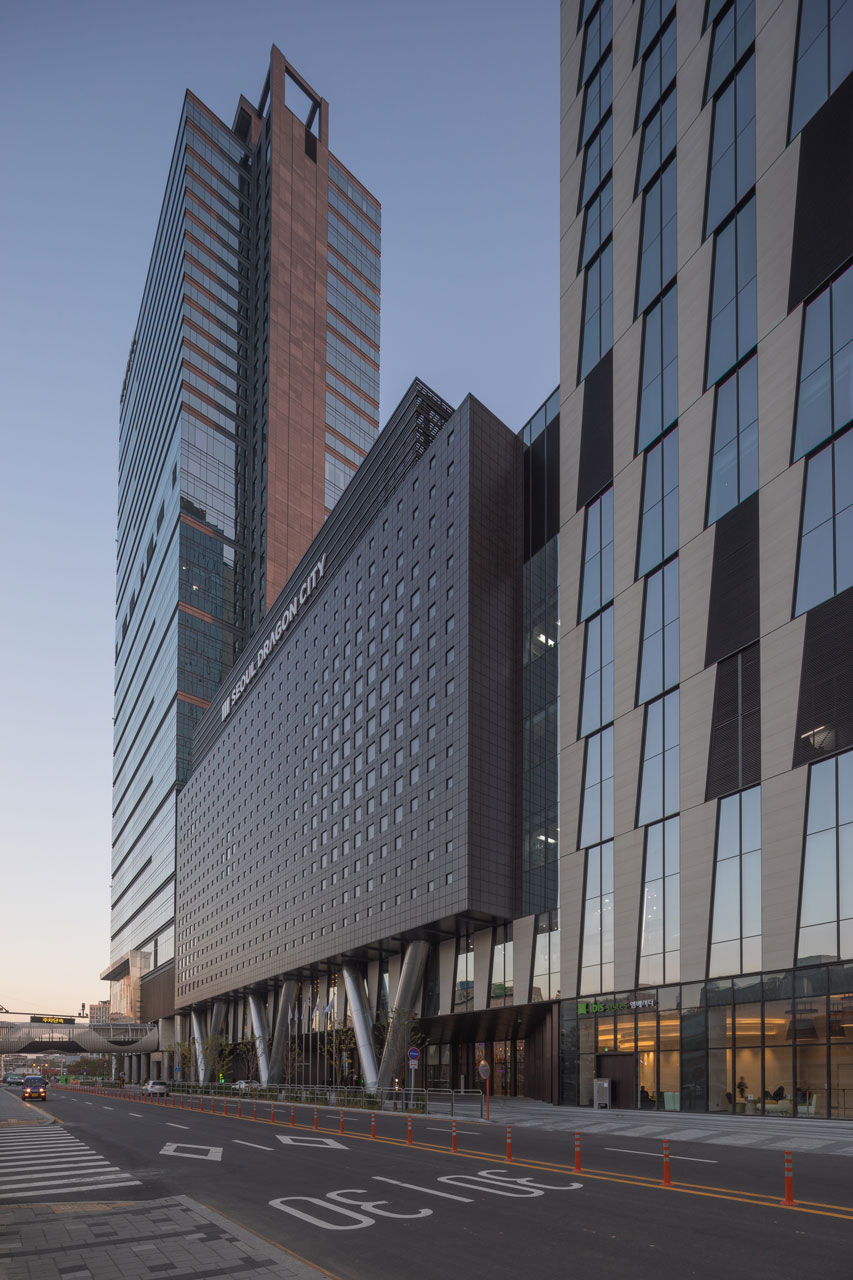
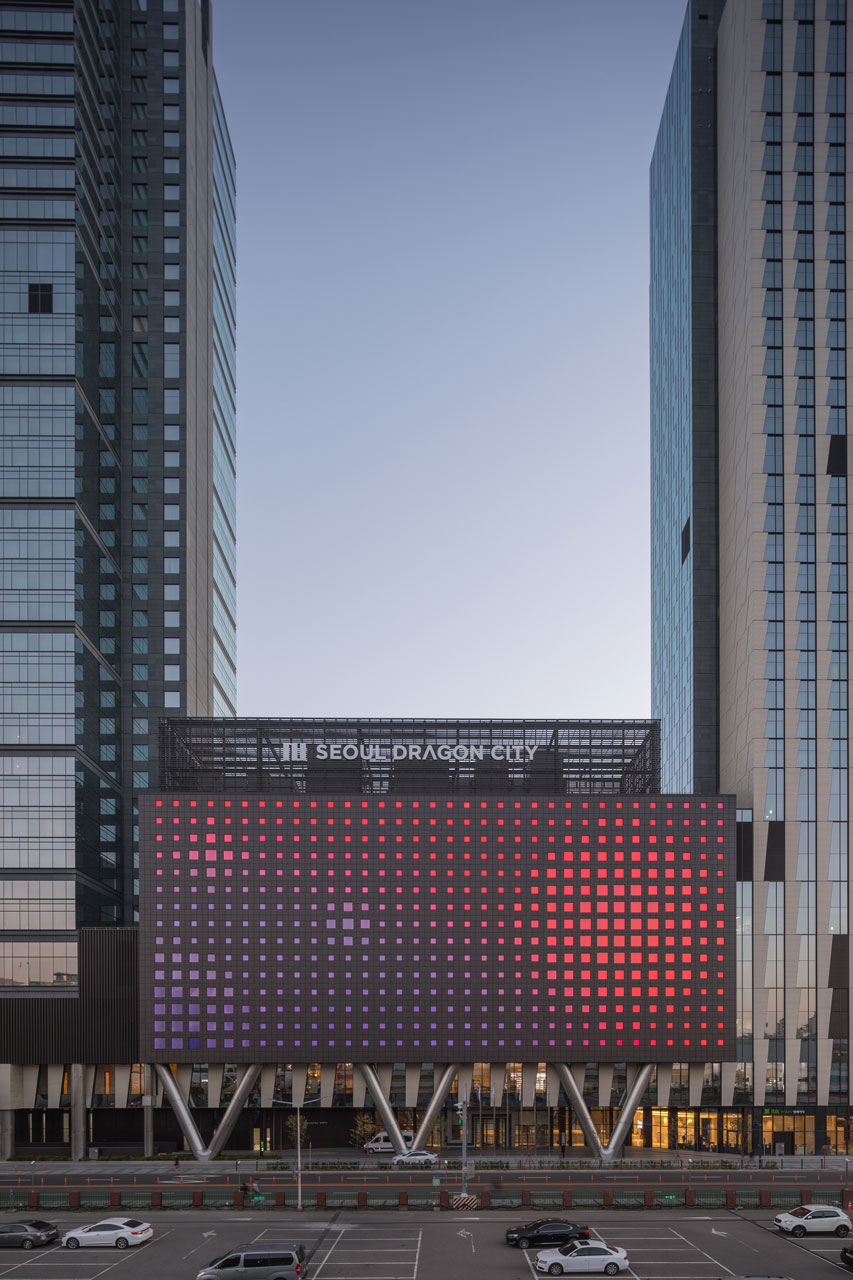
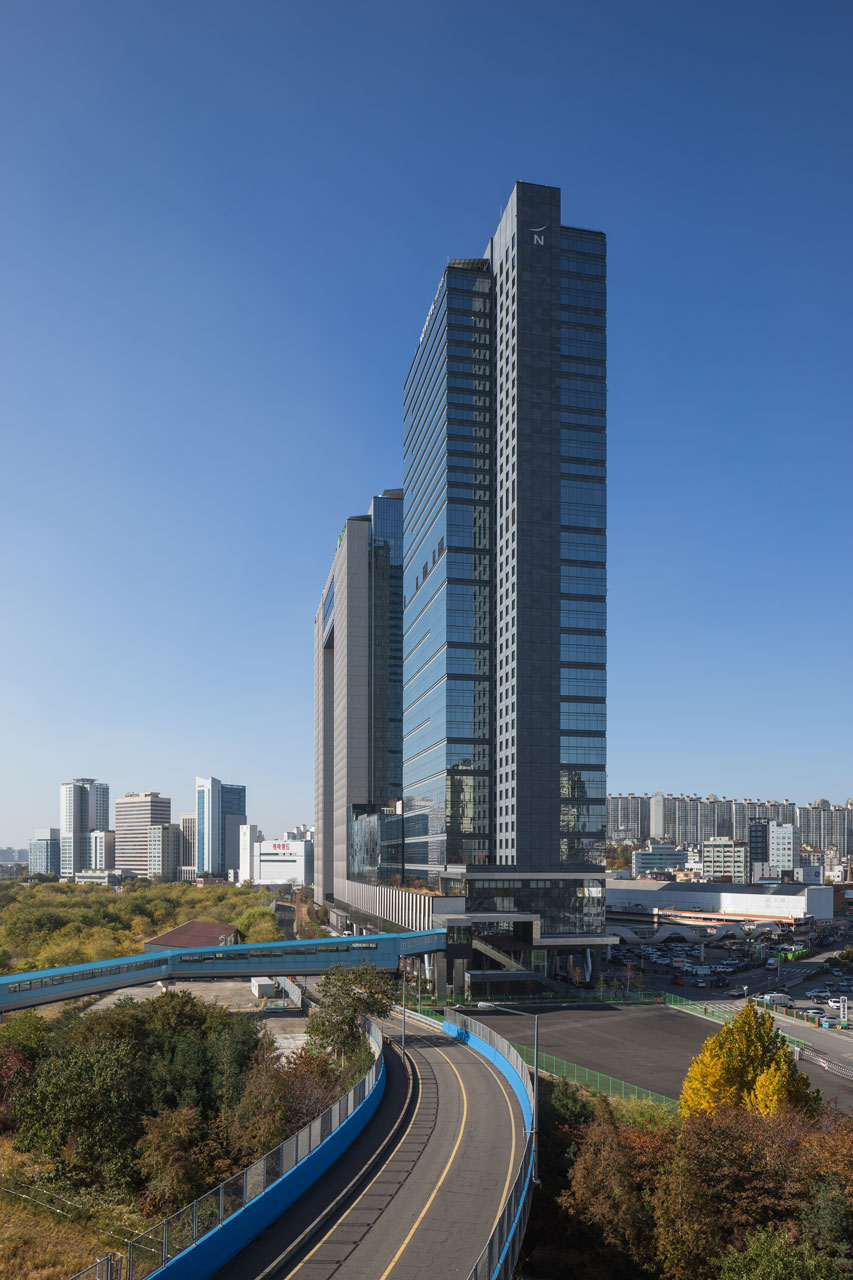
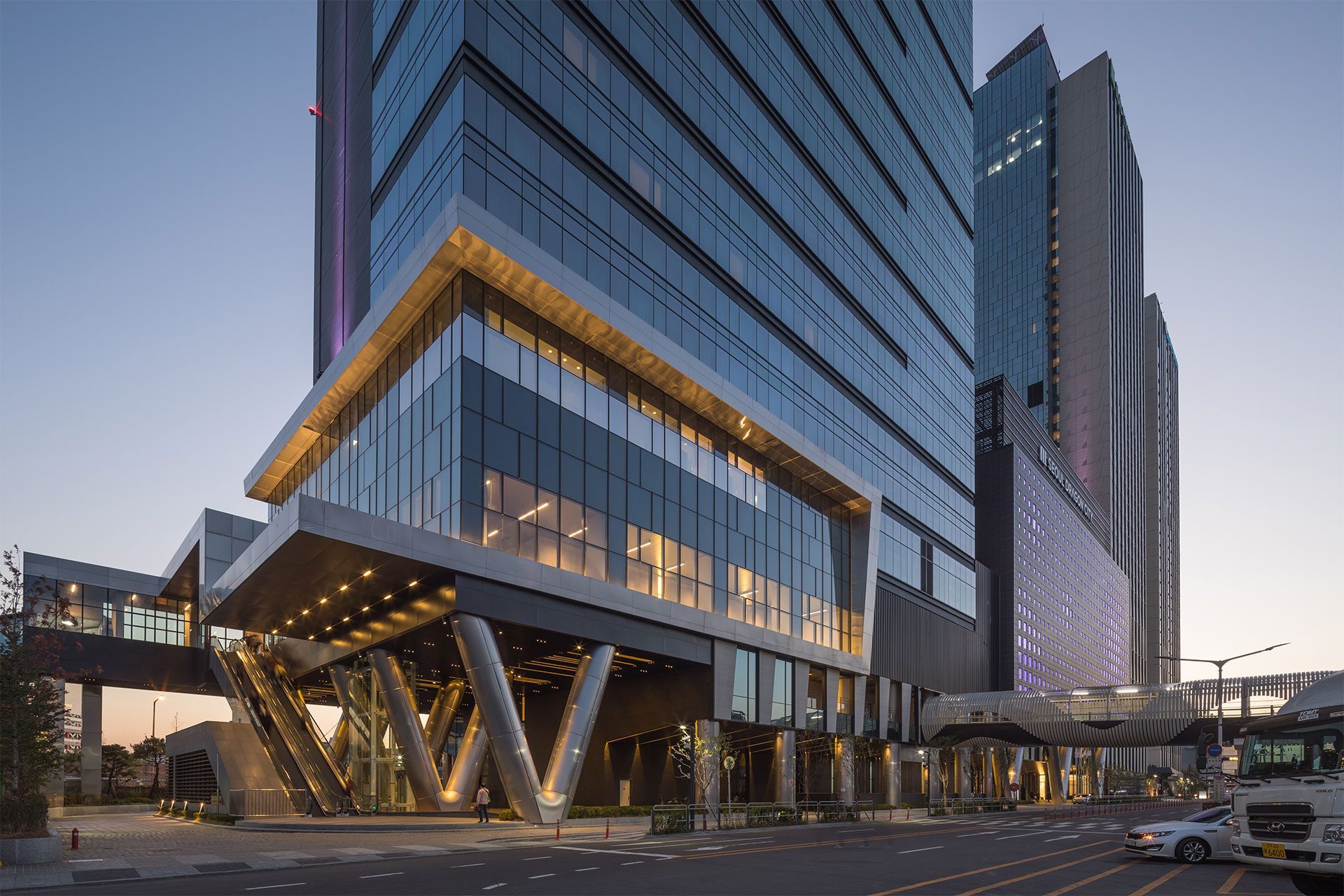
Seoul Dragon City (Yongsan Tourist Hotel), featuring approximately 1,700 hotel rooms along with convention facilities capable of hosting various international events and conferences, is located in Yongsan, historically a key transportation and commercial hub and a gateway to Seoul via the Han River. While the southern side of the site has been transforming into a new urban district through urban improvement, redevelopment, and reconstruction projects, the northern side has retained much of its older character, centering on the electronics market. The site, formerly home to the Yongsan Wholesale Market, Tourist Bus Terminal, and Yongsan Electronics Market, was developed into the current Seoul Dragon City after Seoul City introduced the “Pre-negotiation System for Urban Planning” in 2009 to promote balanced regional development and began reviewing tourism development projects.
The massing is divided into three parts, each maintaining maximum separation distance to secure independent functions and view axes, while programmatically connected at lower and upper floors to appear as a single building on one site. Building Information Modeling (BIM) was applied throughout all phases, enabling pre-construction simulation reviews for each process to minimize construction errors and achieve cost-effectiveness, efficiency, safety, and high-quality building completion. Additionally, from the early design stages, passive eco-friendly design, renewable energy use, and green space provisions were integrated through BIM to achieve energy efficiency rating 1+ and top-level green building certifications.
Seoul Dragon City is a project demonstrating that regional development and urban regeneration can revitalize backward areas, enhance urban competitiveness, and create value not only through investor profit but also by improving the quality of life for local residents and enhancing the urban environment. Although a pedestrian bridge once connected the site from Yongsan Station to the electronics market on the opposite side, its dilapidated state posed significant safety and aesthetic issues. To address these urban infrastructural issues, the design preserves the role of this bridge as a connecting passageway from Yongsan Station, improves hotel accessibility, and actively encourages linkage with surrounding facilities to ensure public benefit. Inside the building, a public walkway was created on the first floor to maintain spatial connectivity between the north and south, considering future connections to the planned Yongsan International Business District.
Article
-
Status
Completed
-
Awards
- 2019 The 14th Korea Ecological Environmental Architecture Awards Excellence Award
- 2018 The 7th Seoul Metropolitan Government Award For consolidation
-
Client
Seobu T&D Co.,Ltd
-
Program
Mixed Use, Hospitality, Urban Design & Planning
-
Design Year
2012
-
Completion Year
2017
-
Location
Yongsan-gu, Seoul
-
Site area
14,979.70m2
-
Gross Floor Area
185,482.49m2
-
Building Area
8,811.40m2
-
Number of Levels
B4, 40F
-
Design
-
Participants






Seoul Dragon City (Yongsan Tourist Hotel), featuring approximately 1,700 hotel rooms along with convention facilities capable of hosting various international events and conferences, is located in Yongsan, historically a key transportation and commercial hub and a gateway to Seoul via the Han River. While the southern side of the site has been transforming into a new urban district through urban improvement, redevelopment, and reconstruction projects, the northern side has retained much of its older character, centering on the electronics market. The site, formerly home to the Yongsan Wholesale Market, Tourist Bus Terminal, and Yongsan Electronics Market, was developed into the current Seoul Dragon City after Seoul City introduced the “Pre-negotiation System for Urban Planning” in 2009 to promote balanced regional development and began reviewing tourism development projects.
The massing is divided into three parts, each maintaining maximum separation distance to secure independent functions and view axes, while programmatically connected at lower and upper floors to appear as a single building on one site. Building Information Modeling (BIM) was applied throughout all phases, enabling pre-construction simulation reviews for each process to minimize construction errors and achieve cost-effectiveness, efficiency, safety, and high-quality building completion. Additionally, from the early design stages, passive eco-friendly design, renewable energy use, and green space provisions were integrated through BIM to achieve energy efficiency rating 1+ and top-level green building certifications.
Seoul Dragon City is a project demonstrating that regional development and urban regeneration can revitalize backward areas, enhance urban competitiveness, and create value not only through investor profit but also by improving the quality of life for local residents and enhancing the urban environment. Although a pedestrian bridge once connected the site from Yongsan Station to the electronics market on the opposite side, its dilapidated state posed significant safety and aesthetic issues. To address these urban infrastructural issues, the design preserves the role of this bridge as a connecting passageway from Yongsan Station, improves hotel accessibility, and actively encourages linkage with surrounding facilities to ensure public benefit. Inside the building, a public walkway was created on the first floor to maintain spatial connectivity between the north and south, considering future connections to the planned Yongsan International Business District.


